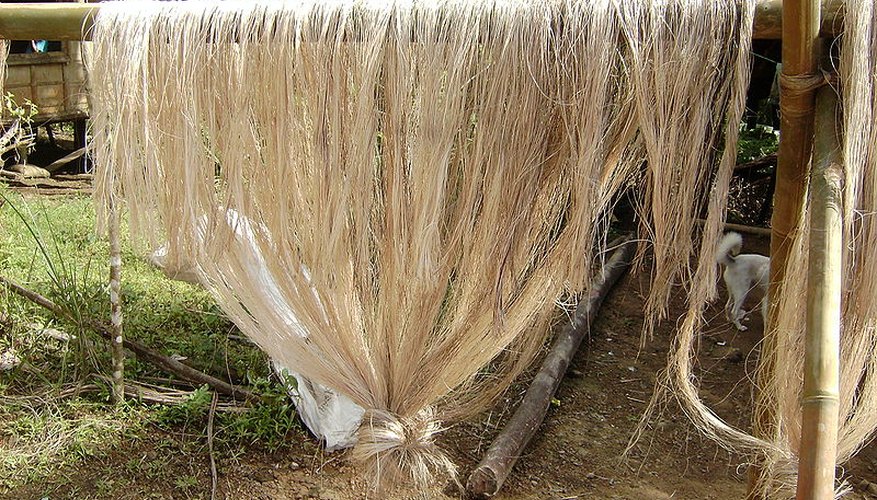Sinamay, also known as Manila hemp, is crafted by hand from fibres of the abaca tree, a type of banana tree found most commonly in the Philippines. As a natural cellulose fibre, it is best dyed using fibre-reactive dyes, which penetrate the fibres for the most long-lasting colour.
Popular brands of fibre-reactive dye include Procion MX, Dylon Cold Dye and Cibracon F. While the process may seem daunting at first, it is in fact more time-consuming than actually difficult. Weigh and measure carefully, and take your time to attain best results.
- Sinamay, also known as Manila hemp, is crafted by hand from fibres of the abaca tree, a type of banana tree found most commonly in the Philippines.
- Popular brands of fibre-reactive dye include Procion MX, Dylon Cold Dye and Cibracon F. While the process may seem daunting at first, it is in fact more time-consuming than actually difficult.
All measurements are for one pound of dry fabric, dyed to a medium shade. Adjust the dye recipe to treat more fabric: double it for two pounds, triple it for three pounds, and so on. Use more dye for darker shades and less for lighter tones. Always use enough water and a large enough container to allow fabric to move freely.
Wash your sinamay garment or fabric, removing any starches, coatings or other additives that could interfere with even dyeing. Do not use fabric softener, which coats fabrics for a softer feel.
Put on your protective gloves and your face mask; inhaling dye powder or soda ash could cause respiratory problems.
Prepare your dye powder by adding it to a small amount of water and mixing it thoroughly. If you are using a liquid dye, do not dilute it.
- Wash your sinamay garment or fabric, removing any starches, coatings or other additives that could interfere with even dyeing.
- Prepare your dye powder by adding it to a small amount of water and mixing it thoroughly.
Fill the bucket with hot water. Add salt and dye solution and stir well to dissolve. The salt helps to move the dye molecules from the water into the fibre.
Add your fabric and swish it around in the bucket, saturating it in the dye solution. Rearrange and swish the fabric frequently for the first 15 minutes. Constant movement will help the dye to react evenly across your fabric. After 15 minutes, remove the fabric from the bucket.
Mix the soda ash or washing soda in a small amount of water and then pour the solution into the bucket. Stir the contents of the bucket well, completely combining the ingredients. Add the fabric back into the dye bath and agitate it, ensuring that the fabric absorbs the dye evenly.
- Add your fabric and swish it around in the bucket, saturating it in the dye solution.
- Add the fabric back into the dye bath and agitate it, ensuring that the fabric absorbs the dye evenly.
Agitate the fabric in the dye bath every few minutes for 30 to 60 minutes, depending on colour intensity desired.
Remove your fabric from the dye bath and rinse it repeatedly in cool water. Work up to warm water and then to hot, watching for the water to run clear.
Soak fabric in soap or detergent and hot water for 30 minutes before washing it in a machine. Stubborn colours may require repeated soap soaks. After washing the fabric, send it through a few more rinse cycles before drying.
Allow the fabric to line-dry or dry it in a machine dryer as usual. If your fabric is stiff, you may rewash with fabric softener or add fabric softener sheets to the dryer.
- Agitate the fabric in the dye bath every few minutes for 30 to 60 minutes, depending on colour intensity desired.
- Allow the fabric to line-dry or dry it in a machine dryer as usual.
TIP
If you have a top-loading washing machine, you may use fibre-reactive dyes in it. Consult your dye's label for instructions. If you choose a blue dye, double the amount used in the recipe. Blue tones tend to come out paler. Clean spilt dye with household bleach. Do not use bleach to remove dye from skin; instead, use a product like Reduran to safely remove staining. Look for a product called Synthrapol, which is designed to effectively remove excess dyes. You can use it both before and immediately after dyeing your fabric.
WARNING
Always wear protective gloves and a dust mask or respirator when working with dyeing chemicals. Any containers, measuring cups, measuring spoons or other equipment used should never be later used for eating or drinking.
